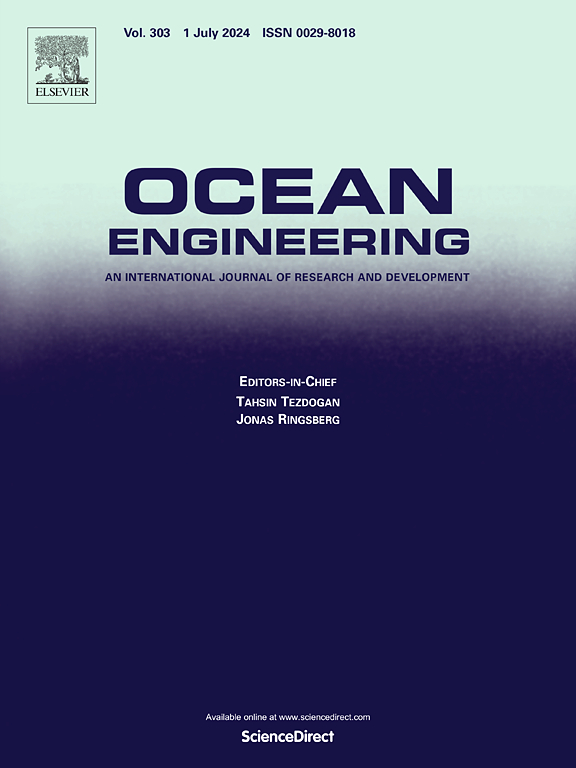A novel model for predicting the ultimate bending moment of subsea pipelines with corrosion-dent coupled defects
IF 5.5
2区 工程技术
Q1 ENGINEERING, CIVIL
引用次数: 0
Abstract
Corrosion and dent defects often coexist on subsea pipelines, and the interaction significantly reduces the anti-buckling capacity of pipelines. The corrosion-dent coupled defects pose a substantial risk of failure for subsea pipelines. This study aims to develop both an analytical and a numerical model to evaluate the ultimate bending moment of subsea pipelines with corrosion-dent coupled defects. A High-order approximation method is proposed to characterize the dent deformation of the pipeline. Based on the plane strain assumption, an analytical solution for the ultimate bending moment of subsea pipelines with corrosion-dent coupled defects is derived. Subsequently, a finite element model of a subsea pipeline with corrosion-dent coupled defects is developed. By comparing the analytical solution with numerical simulation results, it is found that the two results are in close agreement. Considering different types of coupled defects, the effects of parameters such as ovality, corrosion length, corrosion width, and corrosion depth on the pipeline's ultimate bending moment are explored. Finally, numerical simulation results are used to extend the application of the analytical model and to develop a comprehensive evaluation method for the ultimate bending moment of pipelines with corrosion-dent coupled defects.
含腐蚀-凹痕耦合缺陷海底管道极限弯矩预测新模型
海底管道经常存在腐蚀和凹陷缺陷,腐蚀和凹陷缺陷的相互作用大大降低了管道的抗屈曲能力。腐蚀-凹痕耦合缺陷给海底管道带来了巨大的失效风险。本研究旨在建立具有腐蚀-凹痕耦合缺陷的海底管道极限弯矩的解析模型和数值模型。提出了一种表征管道凹痕变形的高阶近似方法。基于平面应变假设,导出了含腐蚀-凹陷耦合缺陷的海底管道极限弯矩的解析解。在此基础上,建立了含腐蚀凹陷耦合缺陷的海底管道有限元模型。将解析解与数值模拟结果进行比较,发现两者吻合较好。考虑不同类型的耦合缺陷,探讨了椭圆度、腐蚀长度、腐蚀宽度、腐蚀深度等参数对管道极限弯矩的影响。最后,利用数值模拟结果扩展了解析模型的应用范围,建立了含腐蚀凹痕耦合缺陷管道极限弯矩的综合评价方法。
本文章由计算机程序翻译,如有差异,请以英文原文为准。
求助全文
约1分钟内获得全文
求助全文
来源期刊

Ocean Engineering
工程技术-工程:大洋
CiteScore
7.30
自引率
34.00%
发文量
2379
审稿时长
8.1 months
期刊介绍:
Ocean Engineering provides a medium for the publication of original research and development work in the field of ocean engineering. Ocean Engineering seeks papers in the following topics.
 求助内容:
求助内容: 应助结果提醒方式:
应助结果提醒方式:


